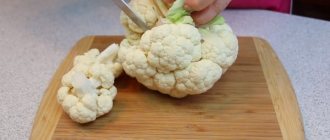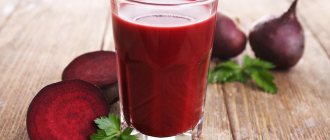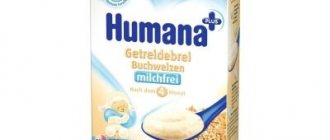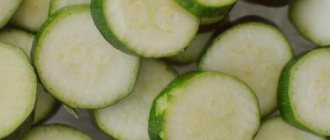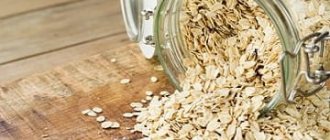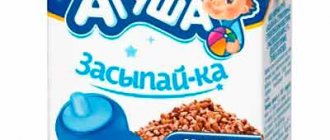A healthy baby's introduction to new foods begins at the age of 6 months. Many mothers have a lot of worries about this. They are especially concerned about where exactly to start complementary feeding. The majority of pediatricians have the same opinion - with vegetable purees. First, zucchini is introduced into complementary foods, and only then cauliflower. It is rich in vitamins and minerals, will help normalize the functioning of the digestive tract, intestines, circulatory system, and also strengthen the immune system.
Let's figure out how to properly introduce cauliflower into a baby's diet, how much to give, and also how to cook it to preserve maximum nutrients.
Benefits for children's bodies
Cauliflower is rich in water, protein, dietary fiber, carbohydrates, monosaccharides, pectins, vitamins (A, B, C, D, E, K, PP, U), micro and macroelements (calcium, potassium, sodium, phosphorus, magnesium, iron, iodine, copper, cobalt, manganese, selenium, zinc, chlorine). It contains essential amino acids such as lysine, choline, tryptophan, arginine, methionine.
It is a low-calorie product - it contains only 25 kcal per 100 g. Therefore, cabbage is suitable for feeding overweight children. In addition, it is easily absorbed in the body and rarely leads to bloating and allergies.
In terms of ascorbic acid content, cauliflower is almost twice as high as lemon.
Regular consumption of vegetables has a beneficial effect on the entire child’s body, namely:
- improves intestinal motility, promotes the development of healthy microflora in it, removes toxins and restores damaged mucous membrane;
- has a positive effect on the functioning of the heart muscle, as well as the condition of blood vessels;
- reduces the risk of developing iron deficiency anemia in a child (low level of hemoglobin in the blood, which is responsible for the transfer of oxygen to organs and tissues);
- has a positive effect on the children's nervous system;
- maintains normal water-salt balance in the baby’s body;
- promotes normal bone development, teeth and hair growth;
- strengthens the immune system, helps fight viral diseases;
- has anti-cancer properties.
In some cases, a child’s consumption of cauliflower causes food allergies, increased gas formation in the intestines, diarrhea, and constipation. Usually the reaction occurs when the vegetable is overused.
Useful qualities of cauliflower for children
Cauliflower is one of the hypoallergenic vegetable crops, making it useful for children from an early age. The vegetable contains vitamins, mineral components, and polyunsaturated acids, so it must be included in the diet of a newborn.
Benefits of vegetables:
- Stimulates the functioning of the intestines, digestive processes and digestion of food, relieves constipation.
- Contains iron, which makes it useful for normalizing blood hemoglobin and preventing anemia.
- Improves the condition of the skeleton and tooth enamel, restores the tone and elasticity of blood vessels.
- Protein of plant origin stimulates the functioning of the bile ducts and liver, accelerates the restoration of its cells.
- It is hypoallergenic, so cabbage inflorescences can be prepared for babies prone to frequent food allergies.
- The content of ascorbic acid in the crop is twice that of citrus fruits. Therefore, it can be given to the baby to increase immune strength.
Cabbage inflorescences are known for their minimal calorie content (20-22 kcal), so it is useful to include them in the menu of overweight children.
From how many months can you give
The introduction of cauliflower to infants occurs at the age of 6 months. For the first time, the dose of puree should not exceed 5 grams (1 teaspoon). Cabbage is given in the morning or at lunch, so that later parents can monitor a possible negative reaction from the body (rash, red spots on the skin, diarrhea, bloating). When it appears, the introduction of cauliflower puree is suspended. After a month, you can try again to offer it to your baby. If the reaction repeats, then introduction to the vegetable is postponed until 10-12 months.
If there is no discomfort or rash, then the next day the portion is doubled. So gradually the daily volume of puree is increased to 50 grams. At 9-10 months it is 150 g, after a year - 200 g.
At what age should you introduce complementary foods?
Despite the fact that packages of industrial puree contain information that it can be introduced into the diet from 4 months, pediatricians do not recommend starting complementary feeding before six months. Early introduction of new products is permissible only when the mother has little milk of her own, and the family does not have the opportunity to buy adapted milk formula.
Can it be used for first feeding?
At what age can you give persimmon to a child?
If a child’s weight at 6 months exceeds the norm, pediatricians ask parents not to start complementary feeding with porridge, but to opt for hypoallergenic cauliflower. In terms of safety, this representative of cruciferous vegetables can only compete with zucchini. The first portion of cabbage puree should not exceed half a teaspoon.
Attention! If a child was born premature, he can begin complementary feeding only after consultation with a pediatrician.
How to cook correctly
Not many mothers know how long to cook frozen or fresh cauliflower for their baby so that it retains the maximum amount of nutrients.
Remove leaves from the cabbage head, rinse thoroughly and divide into small inflorescences.
It is advisable to steam the vegetable for your baby. To do this, the inflorescences are placed in a double boiler for 15 minutes. If there is no such device in the house, then it can be welded. The inflorescences are dipped in boiling water and simmered over low heat for 7-10 minutes. Readiness is checked with a fork; the stem should be easily pierced.
Frozen cauliflower is prepared in exactly the same way as fresh. But you shouldn’t defrost it before cooking, otherwise it will fall apart.
Fresh vegetables are considered healthier for children than frozen ones. Because with strong cooling, some of the useful substances are destroyed.
Features of bringing the product to readiness in various dishes
For salads
In the soup
The same situation applies to cabbage intended for soups. If the vegetable is already almost cooked, it should be added 5-7 minutes before the end of cooking the soup. In the case where cabbage is the main element of the soup, you can cook it in the resulting vegetable broth without removing the cabbage from the pan. Then the cooking process will be faster than planned.
Having prepared the cabbage for making soup, calculate the addition of the remaining ingredients so that the inflorescences do not boil in the pan. The boiled vegetable will be ready two to three minutes after the soup boils. Take this time as a guide for the order in which you plant cauliflower.
You can check the readiness of the vegetable with a fork, knife, or toothpick, whichever is more convenient for the cook. The inflorescence should not fall apart upon contact with a fork or knife, soft inside or slightly crispy if the vegetable undergoes further heat treatment.
If you find an error, please highlight a piece of text and press Ctrl Enter.
For salads
Next, you should decide for what purpose you plan to boil the inflorescences. If they are intended for salads, then the vegetable must be brought to full readiness. The inflorescences are soft, retain their shape, and do not fall apart.
In the soup
Having prepared the cabbage for making soup, calculate the addition of the remaining ingredients so that the inflorescences do not boil in the pan. The boiled vegetable will be ready two to three minutes after the soup boils. Take this time as a guide for the order in which you plant cauliflower.
You can check the readiness of the vegetable with a fork, knife, or toothpick, whichever is more convenient for the cook. The inflorescence should not fall apart upon contact with a fork or knife, soft inside or slightly crispy if the vegetable undergoes further heat treatment.
If you find an error, please highlight a piece of text and press Ctrl Enter.
How to prepare for the first feeding
You can give your child factory-made cauliflower puree or prepare it yourself at home. It is not difficult to prepare and very quickly.
Before cooking, cabbage purchased at the market or in a store must be soaked in cool, salted water for half an hour. This will clean the vegetable from possible nitrates, small insects and their larvae.
To prepare the puree, you need to boil 3-4 small inflorescences and grind with a blender until smooth. You can dilute the puree to a more liquid consistency with the decoction in which the inflorescences were boiled, breast milk or a mixture.
From 8-9 months you can add butter, potatoes, and egg yolk to the dish.
How to choose and what to choose
It’s good when cauliflower grows in its own area. Then you don’t have to worry about its quality, because in this case you are absolutely sure that it has not been treated with any chemicals. But not everyone has this opportunity.
Then you can purchase vegetables from trusted farmers or buy them in a store. But you need to look at the quality of the product being sold.
- The cabbage should be evenly colored, milky or white in color and completely free of any dark spots.
- The leaves are green, not withered.
- The pump itself is elastic.
- The inflorescences are tightly adjacent to each other.
If there is any discrepancy with these conditions, it is better not to take such a product.
If you buy frozen food, then in this case it is better to buy it either by weight or in transparent packaging where the contents are visible. The inflorescences should also be evenly colored, intact, and have a small amount of ice present.
Many people don't want to bother with making purees. This saves time, allowing mommy to do her own thing. Therefore, they choose something that is already ready. In this case, you also need to carefully consider the choice:
- It is better that the product is packaged in a metal or glass jar.
- The integrity of the packaging must not be compromised.
- Expiration date is normal.
- The composition includes only vegetables and water without various additives (thickeners, preservatives, etc.).
Recipes for children
Cauliflower goes well with many vegetables, so the children's menu can be easily varied with tasty and healthy dishes. Below are some popular recipes.
Cauliflower soup for baby (from 10 months)
To prepare the first dish you will need 2-3 inflorescences, a small potato, 20 grams of carrots, 20 grams of onions, 200 ml of water.
All ingredients must be thoroughly washed, peeled and cut. Bring a saucepan with water and potatoes to a boil on the stove, reduce heat and simmer for 7 minutes. Then add the remaining vegetables and cook for another 10 minutes. Pour the broth into a separate bowl, and mash the prepared soup ingredients with a masher or blender until smooth. Pour the broth into the puree, put it on the stove and boil.
You can add 5 grams of butter or 1/4 chicken yolk to the soup.
Cauliflower soup (from 12 months)
You will need 2-3 inflorescences, potatoes, 300 ml of water, 20 grams of carrots, 2 tbsp. spoons of sour cream, 5 grams of butter.
Peel, rinse and cut the vegetables into small pieces. Cook the potatoes for about 7 minutes. Add cabbage, carrots and cook for 10 minutes. Pour a small amount of broth into a separate bowl. Chop the prepared vegetables, add sour cream and butter. If the soup is too thick, you can dilute it with broth. Place on the stove and bring to a boil.
Milk soup for children (from 1.5 years old)
You will need the following ingredients: 2 cauliflower florets and the same amount of broccoli, potatoes, 100 ml of milk, 5 grams of butter, 200 ml of water, salt to taste.
Wash the vegetables, peel and chop finely. Boil the potatoes for 7 minutes, then add the cabbage. Pour in milk, add salt, boil and cook for 10 minutes. Add oil at the end. If the baby knows how to chew, then there is no need to puree the dish.
Cauliflower casserole (from 1.5 years)
To prepare you need 3-5 inflorescences, a tomato, a chicken egg, 100 grams of cheese, 50 ml of milk, butter, salt to taste.
Wash the cabbage, divide into small florets and throw into boiling water and cook for 2 minutes. Next, pour into a colander to completely drain the water. Cut the inflorescences into pieces, place on the bottom of a baking dish, greased with butter, and place tomato cubes on top. Pour the eggs beaten with milk over the vegetables, add salt and sprinkle with grated cheese. Bake for 20 minutes in an oven preheated to 180 degrees.
How to freeze for the winter
Let's look at step-by-step instructions on how to prepare cauliflower at home for freezing:
- The head of cabbage must be thoroughly washed, divided into inflorescences, filled with cold water and left to soak for half an hour to get rid of possible insects.
- After this, the cabbage must be kept for 5 minutes in new cold water, but with the addition of the juice of half a lemon. This will preserve its color, juiciness and most of the nutrients.
- Place a pot of water on the stove, bring to a boil and add the inflorescences to it. Cook for 5 minutes, remove with a slotted spoon and place in a bowl of ice water.
- Place the vegetables on a tray and let them dry thoroughly. Place into bags and place in the freezer.
Frozen cauliflower can be stored for no more than 6 months.
How long and how to cook fresh and frozen cauliflower in soup and before frying after boiling?
- Broccoli is sold in stores in two forms: fresh and frozen. Frozen cabbage can be purchased at any season, but it contains slightly less nutrients
- A universal way to cook cabbage is to boil it. It is a mistake to boil broccoli for a long time. So it not only loses its vitamins, but also acquires a soft consistency. Don't be afraid to undercook broccoli, especially for salads
- Cooking time for broccoli is 5 to 10 minutes. If you are using a frozen product, the time can be slightly increased.
- Broccoli can be steamed. This way it will retain even more beneficial properties.
- The peculiar smell of cabbage quickly disappears as it cools.
- Boiled broccoli can be used as a side dish or added to salads along with other vegetables.
- Also, there are many recipes where broccoli is fried and baked
Cooking broccoli
Possible consequences after consumption
Sometimes cauliflower causes a negative reaction from the body.
Food allergies in a child
It can be observed against the background of diseases of the digestive tract, genetic predisposition, intensification of the intestinal bacterial microflora, or excessive consumption of the product. In some cases, an allergy occurs not to the cauliflower itself, but to chemicals that were used during its cultivation or to increase its shelf life.
Manifestations of the reaction are individual (rashes, redness on the skin, urticaria, severe itching, diarrhea, abdominal pain, conjunctivitis, rhinitis).
Bloating
Cauliflower rarely causes increased gas formation in the intestines. But still, if the baby begins to swell after eating it, then perhaps his gastrointestinal tract is not yet ripe for digesting this type of vegetable. In this case, it must be removed from the diet for 1-2 months.
Constipation from cauliflower
Vegetables usually do not cause problems with the passage of feces; on the contrary, they contribute to this, as they contain a large amount of fiber. Constipation in an infant can occur due to the introduction of cauliflower into the diet too early (the intestines are simply not yet mature to digest it), or due to its introduction in large quantities at once. The cause is also excessive consumption of the product.
Compliance with the rules for introducing complementary foods and portion sizes will help avoid the occurrence of such problems.
Diarrhea
Since the processes of the digestive tract in infants are still not fully formed, loose stools often occur after eating new food. As a rule, after 2-3 days it returns to normal.
Also, the appearance of diarrhea in a child from cauliflower can be a symptom of an allergy. It is usually accompanied by numerous skin rashes.
Cauliflower is a very healthy product. It is low in calories, non-allergenic, and rich in vitamins and minerals. You can prepare many simple, yet delicious dishes from it. Vegetables are introduced into the child’s diet after six months of age, little by little and gradually. Following these simple rules will help avoid a possible negative reaction from its use.
Views:
10021.
